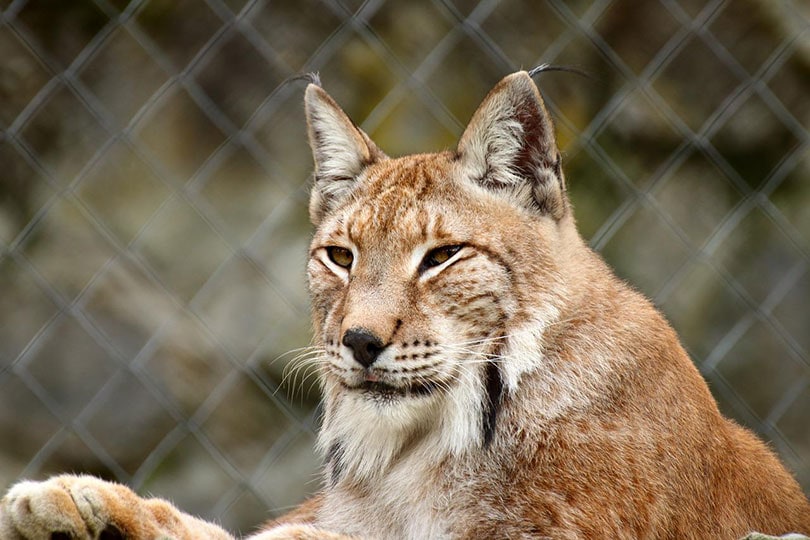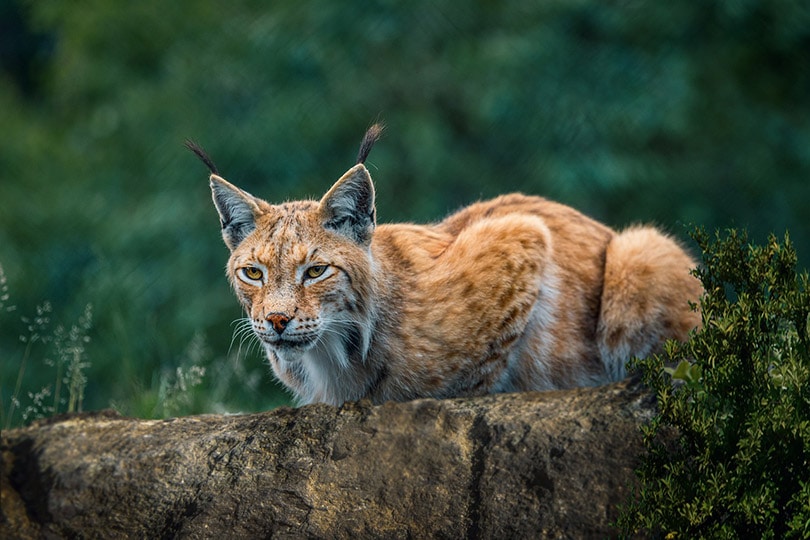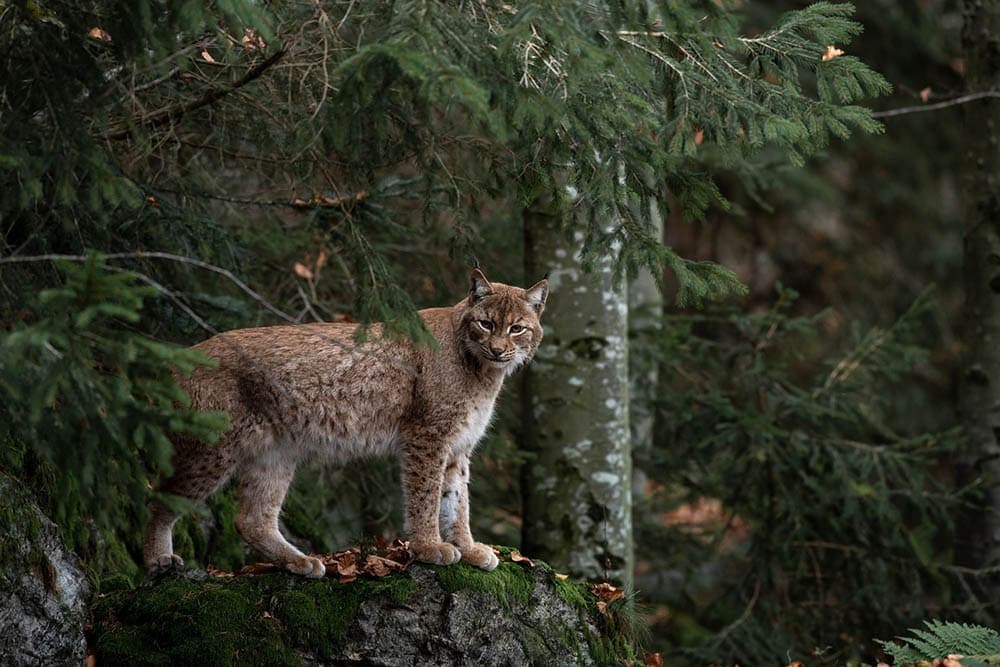The small east coast state of Maryland is home to a wide variety of wildlife, from white-tailed deer to black bears to feral horses. The varying environments help encourage animals to thrive and roam across the state. But what about wild cats? Could there possibly be wild cats living in the forests or at the edge of the Appalachian Mountains?
Those lucky enough may also encounter Maryland’s sole wild cat—the bobcat. While the bobtail can be found across North America, it is a treat to see one in Maryland. Read on to learn more about The Old Line State’s singular big cat.

What Is a Bobcat?
- Size males: 15–40 pounds; up to 37 inches long
- Size females: 9–34 pounds; up to 32 inches long
- Appearance: Stocky build, stubby tail, grayish-brown with stripes and spots
- Lifespan: 5–15 years
The bobcat (Lynx rufus) is a medium-sized wild cat with a distinguishable bobbed tail, giving this cat its name. Their coat ranges from grayish-brown to yellowish-brown with a spotted and striped pattern. These cats also have slightly pointed tufts on their face, enhancing their look. Males and females do not vary in color or pattern; however, you can tell the difference between the sexes by size, with the males being slightly larger.
Since bobcats are mid-sized, they will prey on small mammals like mice, squirrels, rabbits, and woodchucks. As bobcats are solitary—except when pairing up for mating season—they do not often hunt larger prey, such as deer. However, it is not unheard of for a bobcat to take down a deer. Bobcats can also feed on carrion if the opportunity presents itself.

The Bobcat’s Habitat Range in Maryland
Maryland is a coastal state, meaning it is rare to see bobcats in counties near the Chesapeake Bay or the Atlantic Ocean. People have a higher chance of seeing bobcats in the western counties of Maryland:
- Garrett County
- Allegany County
- Washington County
- Frederick County
The counties mentioned above are less populated and closer to denser forests. Bobcats are shy creatures and prefer places that are not frequented by people. However, there have been some sightings near the Chesapeake area.
The History of Bobcats in Maryland
It is hard to provide an exact number of bobcats living in Maryland. After all, they are solitary and can be elusive. However, as Maryland’s population began increasing from the mid-1800s to the mid-1900s, the need for cleared land increased as well. As more acres of forest were cut down to make way for suburbs and farmland, bobcats lost their habitats.
However, a recent study in 2020 by the Maryland Department of Natural Resources Wildlife & Heritage Service noted that the bobcat populations are increasing in Western Maryland. This can be viewed as both a positive and a negative. It is good to see that there are still wild bobcats living and breeding in Maryland. But residents in those areas complain about bobcats killing their farm animals. Since these animals can be an issue for farmers in those rural areas, bobcats can be hunted—with regulations. There are certain seasons when bobcats can be hunted for their fur.

 Final Thoughts
Final Thoughts
Seeing a bobcat is an incredible experience! Their majestic coloring and patterns combined with graceful movements are truly a sight to see. As with observing any wild animal, show this creature respect by keeping a safe distance. If you catch it hunting, eating, or with young, it is best to leave the bobcat alone. Although they might resemble domestic cats, they are far from being cuddly creatures.
Featured Image Credit: milesz, Pixabay
